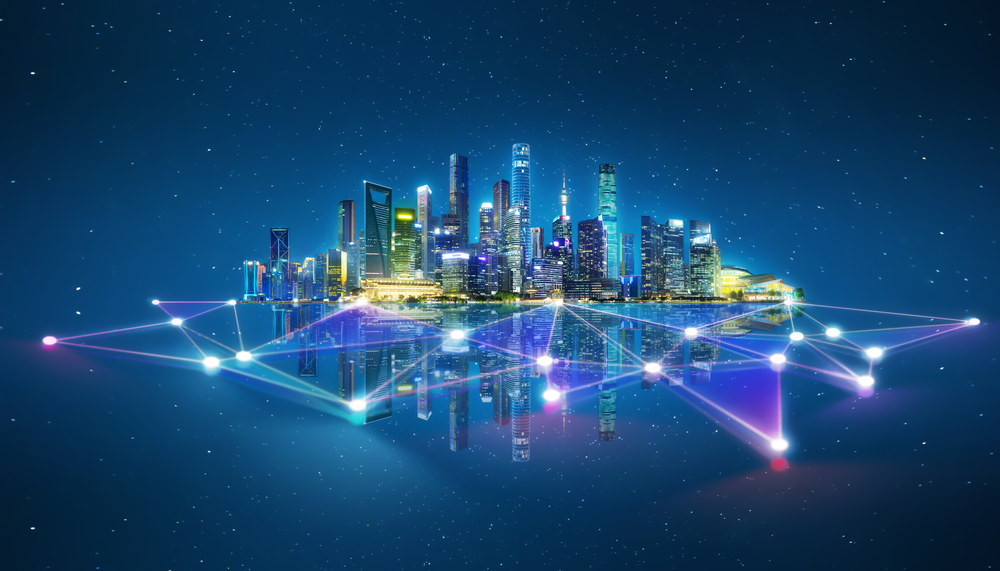On the last Saturday of March every year, “Earth Hour” is celebrated around the world. On this day, cities around the world are invited to turn off lights and electrical devices that are not essential. Thus, awareness of the need to take measures against climate change, pollution, and energy waste is promoted.
“Earth Hour” is a great initiative, but what if I told you that it is in our hands to make the benefits of that day become a regular occurrence every day and in every smart city? This way we would reduce emissions and consumption. Likewise, we would improve mobility and security to make life easier and quality for citizens.
The technology is now available to achieve more efficient, sustainable, and people-centered urban management. All of this included what we know as Smart City.
The importance of sensorization in the evolution towards the Smart City
Sensorization is the first step that must be taken to move toward the smart city. This is where the deployment of sensors comes into play depending on the smart services that you want to implement: weather, pollution, traffic, waste, lighting, or surveillance, among others…
These sensors are small computers capable of reading the environment: physical, chemical, or biological signals, with the ability to communicate with the controller located at the perimeter. The controller will act based on the information received and the sensor that emits it. Thus, you can trigger one or more actions in a specific area, and generate a record in a local or remote database to later analyze the data. This will allow you to make predictions and anticipate events to make decisions in advance.
The latest generation sensors use semiconductors. In this way, they take up less space and optimize the energy resources, so important for their deployment in different objects located in disparate places such as streetlights.
Information is also collected from each person; This is another type of “sensor”, which feeds back to the services it uses and helps city planners acquire data practically in real time.
Connectivity: the essential link in the Smart City chain
The interconnection of objects is essential in a Smart City. To do this, we have different technologies that provide communication to devices wirelessly, such as LTE, 5G, Wi-Fi… and others with low consumption, such as Lora and NB-IoT to cover long distances or Zigbee and Z-wave. for shorter distances.
This diversity implies the freedom to use different communication systems for the same device and choose the communication technology to be used based on distance and/or consumption. This adds another layer of protection in each case with secure encryption that guarantees the integrity of the data.
By segmenting the network based on the organization of the smart city’s zones, the city can be managed more efficiently and thus act in a localized manner in the face of a possible problem that may be isolated to a specific area.
Cloud analysis is key to a more efficient Smart City
Cloud Computing increases versatility and computing power and enables real-time analysis of local systems when needed. There are situations that require immediate action based on recent data and the Cloud is useful for analyzing large volumes of data, what is known as Big Data. This technology offers new solutions and infrastructure and includes processing nodes, databases, and analytical engines. Everything is adapted to the needs of the required process.
Cybersecurity strategies and attack prevention
It is essential to incorporate cybersecurity in the development of the deployment. In order to guarantee the availability of the services provided, it is necessary to choose devices that have periodic updates with which to avoid possible vulnerabilities or segment networks and incorporate high-level equipment with the latest threat detection capabilities.
All communications established must always be secure, through the use of encryption and certificates, isolating and protecting them with different layers of security that prevent the system from being compromised in the event of an attack.
We must not forget that the larger and more complex the project deployed, the chances of receiving an attack increase. Therefore, each device must be protected and updated, since if any of the elements that come into play in the communication are compromised, it can affect the trust of the system and make the data unreliable.
In the worst case, it can generate a security breach in a smart city that can lead to disaster. For this reason, we should not leave aside the transit of the data itself from when it leaves the device or sensor to the destination, since if it is not adequately protected during the trip, it can be intercepted, captured, or manipulated.
By implementing quality protection measures, with the availability of a human team that establishes active and passive actions, we will have a robust and operational service against any threat that may arise.
Smart maintenance benefits the city
The maintenance of the smart city and the deployed devices is controlled from the command center. Here data will be collected from across the city through image processing, video, data integration, and alerts.
The system will inform us in real-time if one of these sensors or devices has stopped working or if what it monitors is out of range. In this way, a review, repair, or replacement can be carried out. This will prevent, for example, an element from not working for weeks.


